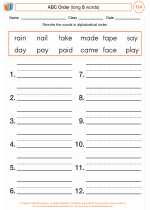Long and Short Vowels Study Guide
Introduction: Vowels are an essential part of the English language. They can be divided into two main categories: long vowels and short vowels. Understanding the difference between long and short vowels is crucial for reading and spelling.
Short Vowels
Short vowels are pronounced briefly, and their sound stays the same throughout the word. They are often found in closed syllables, where the vowel is followed by a consonant. Some examples of short vowel sounds are:
- A: as in cat
- E: as in bed
- I: as in big
- O: as in dog
- U: as in cup
Long Vowels
Long vowels are pronounced with the sound of the letter's name. They can be found in open syllables or when followed by a silent e. Some examples of long vowel sounds are:
- A: as in gate
- E: as in feet
- I: as in kite
- O: as in rope
- U: as in cube
Practice Activity:
Now that you've learned about long and short vowels, it's time to practice! Below are some words. Identify whether the underlined vowel is a long or short vowel.
- The cat sat on the mat. (Short)
- We made a cake for Jake. (Long)
- This is a big, red pen. (Short)
- The kite flew high in the sky. (Long)
- Can you jump over the log? (Short)
Conclusion:
Congratulations! You've completed the study guide for long and short vowels. Practice identifying long and short vowels in words to strengthen your understanding of this important concept.
Keep practicing and have fun learning!
.◂English Language Arts Worksheets and Study Guides Second Grade. Long/Short Vowels
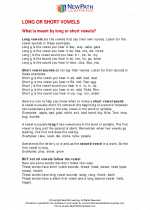
 Worksheet/Answer key
Worksheet/Answer key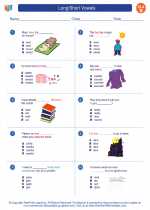
 Worksheet/Answer key
Worksheet/Answer key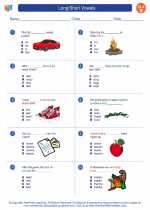
 Worksheet/Answer key
Worksheet/Answer key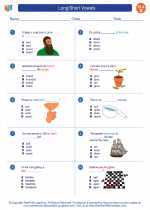
 Worksheet/Answer key
Worksheet/Answer key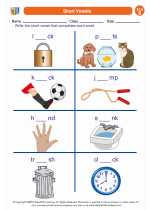
 Worksheet/Answer key
Worksheet/Answer key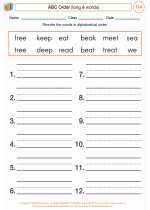
 Worksheet/Answer key
Worksheet/Answer key